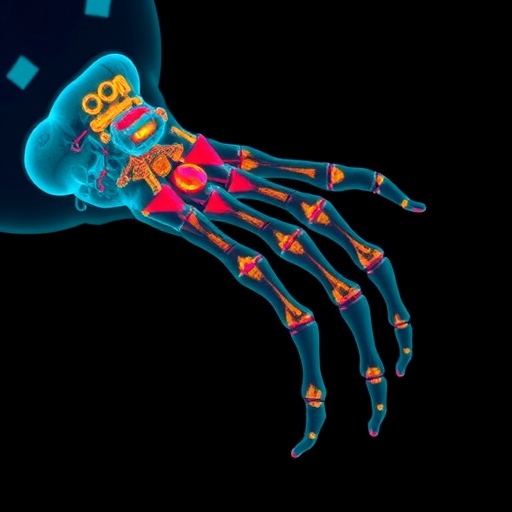The study of natural toxins and their derivatives may help in the development of medicines to treat diseases like cancer and osteoarthritis, says coordinator of the Center of Excellence in New Target Discovery.

Credit: Heitor Shimizu
Animal venoms are the subject of study at research center based at the Butantan Institute in São Paulo. But in this case, the idea is not to find antidotes, but rather to use the properties of the venoms themselves to identify molecular targets of diseases and, armed with that knowledge, develop new compounds that can be used as medicines.
The focus of the work are immuno-inflammatory diseases like osteoarthritis and rheumatoid arthritis, cancer and neurodegenerative diseases, explained Ana Marisa Chudzinski-Tavassi, a researcher at the Butantan Institute and coordinator of the Center of Excellence in New Target Discovery (CENTD).
“In addition to venoms, we are also studying toxins isolated from venoms and animal secretions – from the Brazilian biodiversity and from other countries – to identify and validate therapeutic targets that lead to the development of new medicines,” said Chudzinski-Tavassi during FAPESP Week London, held February 11-12, 2019 at the Royal Society in London.
The CENTD, an Engineering Research Center (ERC) funded by São Paulo Research Foundation – FAPESP and GSK, employs modern and complex molecular and cellular biology techniques, including phenotypic multi-parametric, interatomic, and proteomic assays, transcriptomic analysis and bioinformatics.
“We have established a biobank – a bank of biological samples, a collection of venoms, isolated fractions, recombinant proteins and synthetic peptides – for the maintenance, control and management of samples used in every study conducted at the CENTD. Cell models related to the diseases that are being studied at the CENTD were established and used to evaluate proinflammatory, anti-inflammatory, cytotoxic [toxic to cells] and cytoprotective [that protect cells] activities. In addition, translational models to study signaling pathways are being used for the purpose of finding new molecular targets for the development of innovative medicines,” Chudzinski-Tavassi told.
“After identification of a potential new target, subsequent validation is required. For this, the CENTD utilizes advanced molecular biology methodologies like the CRISPR/Cas9 system for gene knockout and expression activation, in knockout animals as well as in in vitro and in vivo tests. To date, 23 whole venoms have been screened for pro-inflammatory effects in the six cell models that have been established and standardized,” she said.
“In this screening, three whole venoms were selected for later studies. The same cell models were standardized in order to analyze the anti-inflammatory or cytoprotective properties, and in this case, in addition to two whole venoms, eight synthetic peptides obtained based on venom protein amino acid sequences, and two recombinant proteins, were selected,” said Chudzinski-Tavassi.
“In view of the anti-inflammatory and cytoprotective effects clearly shown in different cell types related to arthritic diseases, we suggest several of the peptides that the CENTD has in its library of compounds be used as tools for studying targets of degenerative diseases,” she said.
According to the Center’s coordinator, studies that are underway will allow discovery of the pathways through which these effects occur.
Promising antitumoral
The CENTD researchers, in collaboration with researchers from Albert Einstein Hospital, conducted transcriptomic (the study of gene expression) and proteomic (the comprehensive study of expressed proteins) analyses on tissues from healthy donors and donors with osteoarthritis. Using bioinformatics analyses, they are deciphering differentially expressed genes and proteins in these tissues.
“The next step will be to employ the peptides previously defined as cytoprotective and anti-inflammatory to seek new molecular targets related to developing osteoarthritis and contribute to its treatment,” Chudzinski-Tavassi said.
With regard to cancer models, in addition to studies on tumor cell cultures, the researchers used what is known as a translational model to perform transcriptomic studies on spontaneous melanoma tumors in horses at the Butantan Institute’s farm.
“Melanoma tumors were treated with a recombinant protein with antitumoral effects, already described in previous work by the group, that selectively acts on tumor cells and induces proteasome inhibition followed by cell death through the mechanism of apoptosis,” Chudzinski-Tavassi said.
“Results derived from the transcriptomic analysis of the horse tumor translational model indicate that the antitumoral molecule, Amblyomin-X, besides its direct activity on tumor cells, activated the immune system of the animals to fight the tumor, causing the death of tumor cells through a mechanism of immunogenic cell death,” she said.
The researcher went on to say that the findings of this translational model confirm the group’s previous findings, obtained in in vitro and in vivo models, and reveal important new molecular pathways related to targets involved in immunogenic death.
PITE and ERC
Inaugurated July 21, 2017, the CENTD follows the rules of FAPESP’s Research Partnership for Technological Innovation (PITE) and Engineering Research Centers (ERCs), in conducting long-term research with companies, enabling the shared generation of knowledge in areas of common interest, with great potential for application of the results generated.
“The CENTD has six main lines of research that overlap and involve nearly 35 researchers, as well as students and technical staff, for a total of 79 people involved in the project,” Chudzinski-Tavassi said.
“To facilitate research, high performance equipment was purchased to enable high impact assays, revealing important cellular phenomena to identify the structures responsible by the different phenotypes,” she said.
Among such equipment is High-Content Screening (HCS), which allows a rapid analysis of molecules of interest and an assessment of phenotypes. By using the equipment, it is possible to assess changes in the morphology of cells or their markers, which is extremely important information in studies of cell activity and survival due to a variety of stimuli.
“The collaborative partnership established with groups from the United Kingdom at CENTD, with support from FAPESP, GSK and the Butantan Institute, has proven to be an efficient model for developing high-impact science, discovering new drugs and training people in this important area enabling health innovation,” said Chudzinski-Tavassi.
Dozens of researchers from Brazil and the United Kingdom take part in the CENTD. The Center’s assistant coordinator is Isro Gloger, director of the GSK Trust in Science Project.
“We have worked in Brazil with FAPESP in funding innovative projects on initiatives involving collaborative work with academic researchers. One of them is at the CENTD. Our relationship with FAPESP is a great example of a public-private partnership that works,” said Gloger, a molecular biologist born in Argentina who has spent 29 years at GSK.
###
About São Paulo Research Foundation (FAPESP)
The São Paulo Research Foundation (FAPESP) is a public institution with the mission of supporting scientific research in all fields of knowledge by awarding scholarships, fellowships and grants to investigators linked with higher education and research institutions in the State of São Paulo, Brazil. FAPESP is aware that the very best research can only be done by working with the best researchers internationally. Therefore, it has established partnerships with funding agencies, higher education, private companies, and research organizations in other countries known for the quality of their research and has been encouraging scientists funded by its grants to further develop their international collaboration. You can learn more about FAPESP at http://www.
Media Contact
Joao Carlos Silva
[email protected]
55-113-838-4381
Original Source
http://fapesp.




